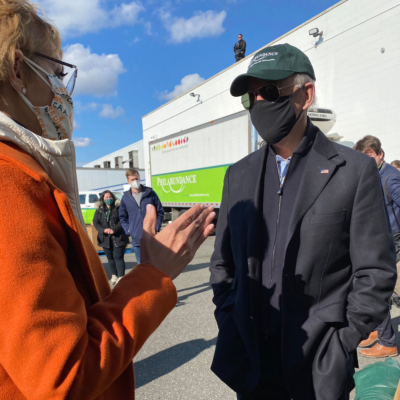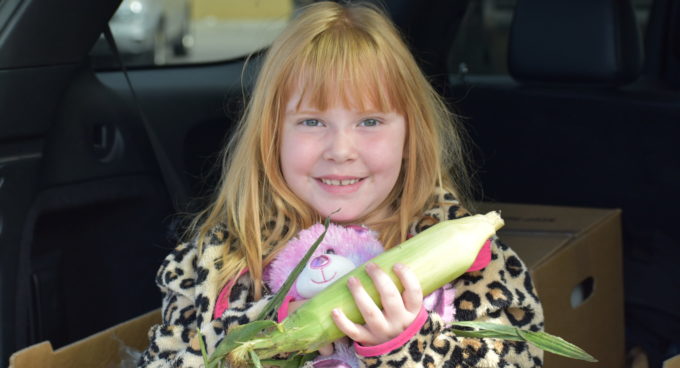Worsened by the pandemic, hunger has reached a tipping point.
After consistent progress in decreasing national rates of food insecurity, the pandemic and resulting economic downturn have wiped out any gains made. Feeding America estimated in October 2020 that an additional 17 million people, including 6.8 million children, would struggle with having enough to eat due to COVID-19. The Feeding America network of 200 food banks and 60,000 food pantries and meal programs has also reported a nearly 60 percent average increase in demand for food assistance – a surge in hunger that the charitable sector alone cannot meet.
On the horizon of a new Congress and administration, our key decision-makers can continue to provide the food and economic relief that our neighbors in need must receive immediately to weather the public health and economic emergencies gripping our country.
 Lawmakers must act urgently to support every. single. person. who doesn’t have enough to eat.
Lawmakers must act urgently to support every. single. person. who doesn’t have enough to eat.
On January 18, Martin Luther King Jr. Day, then-President-elect Biden joined Feeding America network members Philabundance and Feeding Pennsylvania for a food-packing, service event, marking his commitment to turning the tide on the nation’s full-blown hunger crisis. There are some steps that President Biden can take, in addition to his recent executive order, to begin to make his commitment a reality.
Congress has already taken some first steps, including passing a stimulus package late last year that provides support for the growing number of households struggling to put food on the table. However, more needs to be done to put more food dollars in the pockets of families in the U.S., strengthen our federal nutrition programs, and ensure food banks have enough food to help our communities.
What needs to be done, and how can we do it?
Put more food dollars in the pockets of families for as long as these tough times continue
- Strengthen the Supplemental Nutrition Assistance Program (SNAP) by extending the benefit boost for all recipients by at least 15 percent for the duration of the economic downturn to provide critical food assistance and help promote economic stimulus
Cut child poverty and ensure households with kids have the resources needed to keep children fed
- Provide direct, financial assistance to those most at risk of food insecurity by expanding the Child Tax Credit and Earned Income Tax Credit, and ensuring that the increased benefits are targeted to those individuals and families with the lowest incomes
Support food banks and their ability to serve families in need
- Increase funding for food purchases to support food banks, specifically through an additional $900 million for food purchases through The Emergency food Assistance Program (TEFAP) until September 30, 2022
- Invest $543 million in the cold storage and transportation capacity of the nation’s charitable food system
Feed kids during school closures and out-of-school times, and make it easier to provide meals to children in need
- Extend and expand Pandemic-EBT (P-EBT) to ensure the United States Department of Agriculture (USDA) has the authority needed to continue this important program through the summer and for future school closings
- Extend and strengthen child nutrition program waiver authority to ensure the flexibility needed to continue operations
We cannot solely food bank our way out of hunger – we also need our lawmakers to take action to invest in the nation’s food assistance programs.
Ending hunger can only be done through a strong private and public partnership. The charitable sector, lawmakers, and federal nutrition programs form a powerful alliance that has the power to curb rates of hunger we haven’t seen since the Great Depression. During this critical moment for our nation, strengthening that alliance will be key to helping the economy and families hit hardest get back on their feet.



